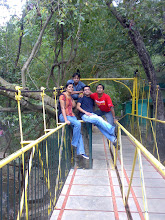TDI or Tivoli directory integrator is used to send and receive data from a data source to ITIM and back. TDI is a much more powerful tool that can be used over IBM Tivoli applications and also over many other places.
Things to understand about TDI :
1. The way the data is transmitted across
2. The java packets in which data flows across.
I will try to talk about various connectors here :
Lets start with JDBC , possibly the most popular considering the fact its easy to connect to Databases. I have successful connections from MS-Access to MS-SQL server, Oracle 10g connection and now JD Edwards.
The basic rule for JDBC connector is it talks to the database with the correct credentials. Once you have correct JDBC , and passwords entered , you need to specify schema.
The tables you want to fetch the data from. If you have multiple tables , enter all the table names.
Once the DB2 connector is up and running :
JDBC URL : jdbc:db2://localhost:port/dbSchema
JDBC Driver: com.ibm.db2.jcc.DB2Driver
Username: adminDB
Password: ****
Schema : dbInfo
Sometimes we have to access data from different db and feed it into other db. Like fetching data from MS Server 2005 or JD Edwards , or Oracle and feeding the data in ITIM LDAP / ITIM DB2 or any other platform.
The most important advantage of using the JDBC connector is it takes care of the data change, the hooks helps us weed unwanted entries and play with the data while in transit.
Suppose we have to take data from MS SERVER 2008 and put in DB2, there are many ways where we can check the data.
I prefer to check for valid data in Feed hooks while the manipulation in Flow.
Always remember to use :
task.logmsg("****** CONN OBJECT before GETNEXT*******");
task.dumpEntry(conn);
Using the above in hooks can help in determing the connection parameters.
